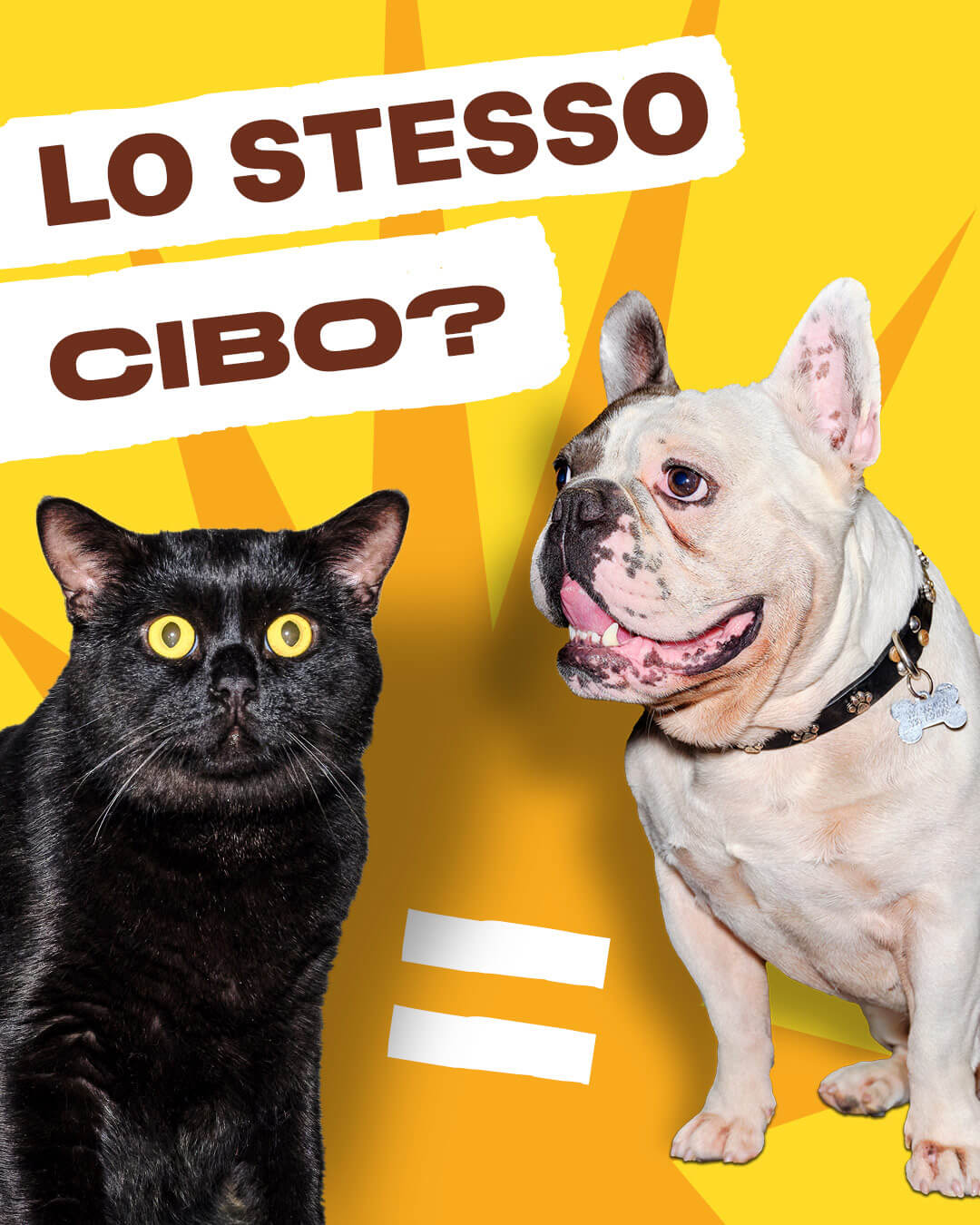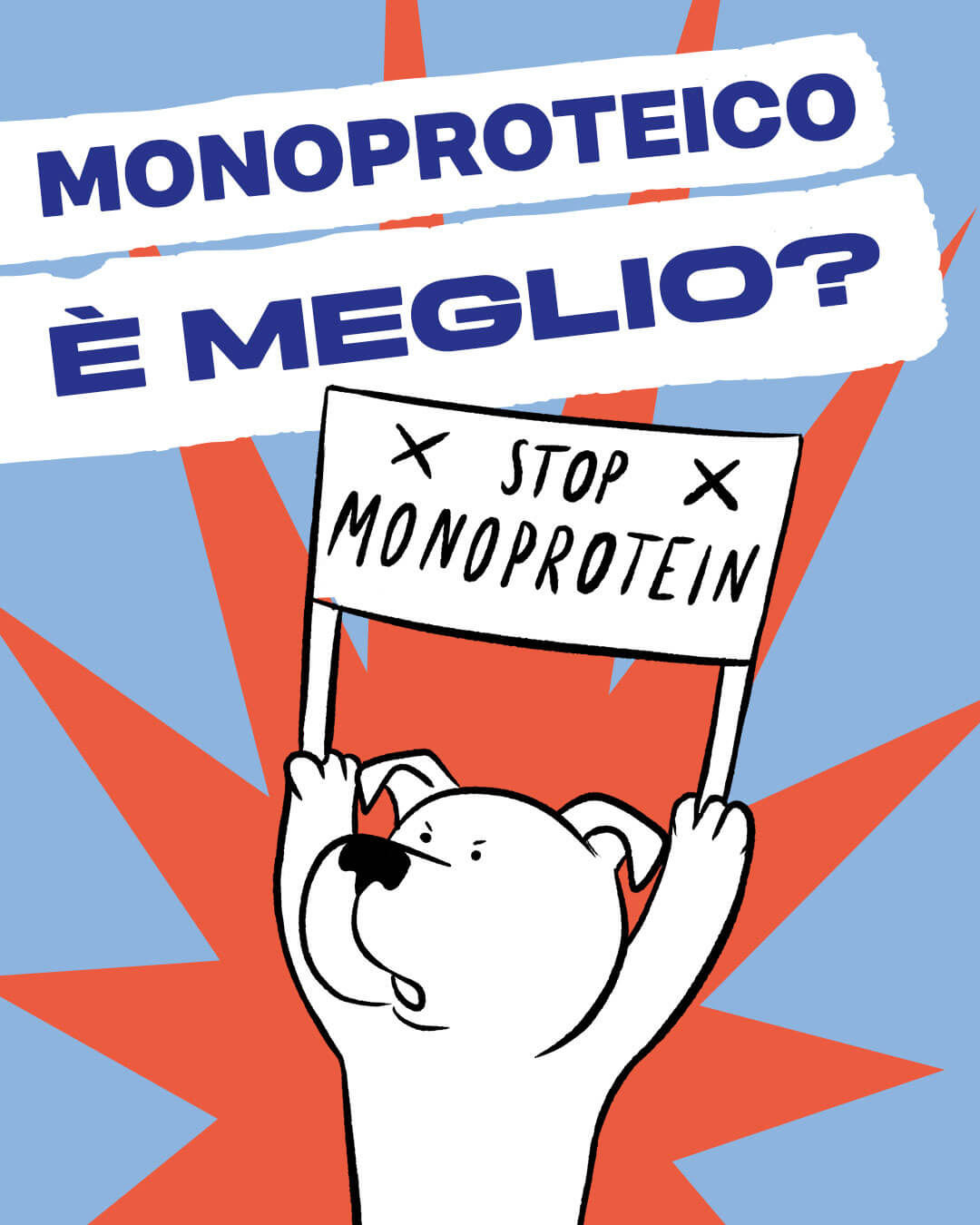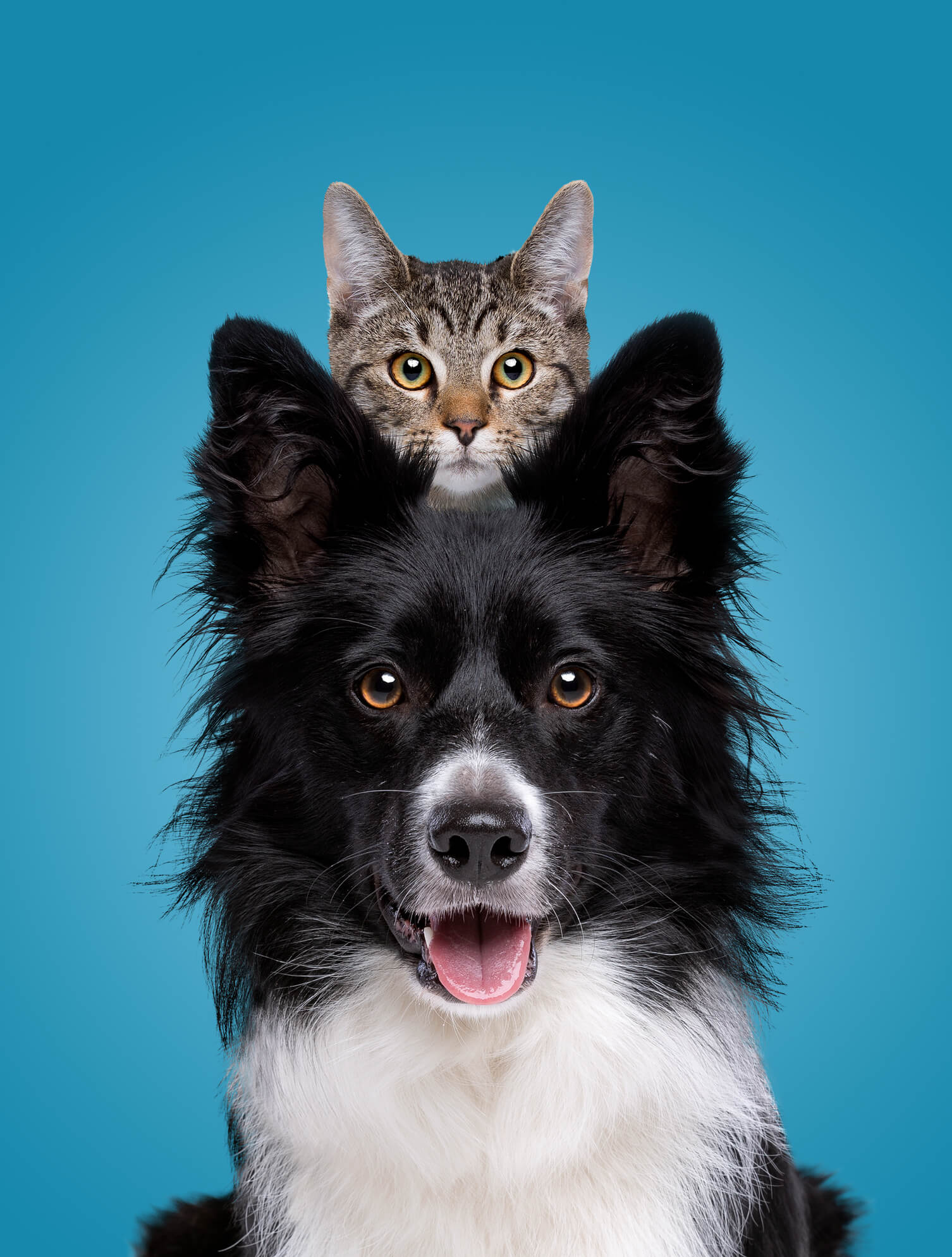BUT IS MIXING DRY AND WET BAD FOR DOGS AND CATS?
I often get dog and cat owners at the clinic who tell me, “Doctor I can’t mix kibble with wet food because it’s bad for my pet’s digestion” … Before answering this question, let’s shed some light on pet food technology and how both dry and wet pet foods are produced.
Simplifying as much as possible, wet foods are derived from products whose processing is less articulated; in fact, the raw material is more or less processed, canned, and sterilized. With humidity around 70%
To form crunchies, however, the finely ground and homogenized product is passed through the extruder, a machine that creates at high pressure and temperature a very fluid mixture (similar to a mousse) that is, then, cut into small pieces. Next, these pieces, still soft, are dried so that they become hard and form croquettes, ready to be bagged. With humidity of 8-10%
We can say, therefore, that a major difference between wet and dry food is the percentage of water it contains. It should be mentioned, however, that the kibble production process necessarily requires a carbohydrate source (usually starches) unlike wet foods.
BUT HOW DOES THE DIGESTION OF DOGS AND CATS WORK?
Once in the intestines, the primary nutrients (meat, sugars, and fats) are broken down into simple molecules (proteins, carbohydrates, and lipids) and then into even simpler molecules. This happens with all food components, whether dry or wet.
As an example, just consider how from carbohydrates in even very different foods, such as rice or pasta, the same glucose molecules are still obtained through digestion. Similarly, it happens with protein sources that, for example, regardless of whether they are derived from lamb, chicken, or tuna will eventually be converted into amino acids .
So the digestive process will be longer for more complex foods, but regardless of the starting complexity of a food, the intestines through digestion will always get to break it down into the same simple molecules so that it can be absorbed .
SO AT THE DIGESTIVE LEVEL WHAT HAPPENS IF I MIX DRY AND WET FOODS?
As mentioned before, between dry and moist foods there is a big difference in the amount of water present. Water is a nutritional staple but does not lead to substantial changes in digestion except for the speed of gastric transit. The higher the moisture content, the faster food passes from the stomach to the intestines.
In healthy animals, the more or less rapid passage from the gastric compartment does not create problems so the intestine will receive wet food first and kibble later. In general, wet foods have fewer ingredients than dry foods, so not only is their gastric transit faster, but so is their digestion.
SCIENTIFIC EVIDENCE, WHAT DOES IT SAY ABOUT A MIXED DIET?
Animals appreciate both dry and soft foods. The cat usually prefers them divided into different meals throughout the day, unlike the dog who likes them together in the same meal. A mixed diet, therefore, is not to be discouraged; in fact, it combines the advantages of one and the other.
Dry foods also promote greater oral hygiene. Several studies show that, through mechanical action, they limit plaque accumulation. Wet diets,on the other hand, often have greater palatability and increase water intake, which is especially useful in cats.
ULTIMATELY, HOWEVER, WATCH YOUR CALORIES!
I always point out, however, that in doing mixed dry-wet diets we have to consider the total calories we are feeding. And while it is easy to figure out the daily ration to give for one type of food, since it is listed on the package tables, it is less easy if I want to give two different foods. Get help in this calculation from your veterinary nutritionist. Perhaps in the near future I will reveal some “tricks” on how to do quick and easy calculations so that you don’t get the calories wrong if you want to combine dry and wet foods.
Dr Simone Falci
Veterinary physician with expertise in nutrition
BIBLIOGRAPHICAL REFERENCES
*Ingham et al. 2002
**Burger et al. 1980









